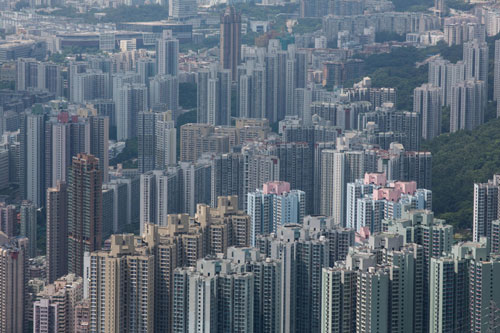The art of selling condos
In Hong Kong, the marketing of new developments, by a handful of
companies, may be world leaders in devising clever sales pitches as
this essay demonstrates.
Evil, cheating,
greedy devils
Time Out Hong Kong magazine
21 February 2012

In the 2009-2010 construction boom and apartments were scarce, the
developers used marketing practices designed to make the most of such
scarcity.
Would-be buyers were forbidden to use tape measures in the model show
rooms, which contained scaled-down furniture and glass walls to make
the spaces look bigger. They were kept waiting, and it was nearing
midnight when salesmen placed contracts before them. Sign or lose the
chance – oh, and prices were due to rise the next day.
People complained to the media about the high-pressure tactics and
their bitterness resonated.
Lucky floor numbers
The major symbolic flashpoint was Henderson launching its 39 Conduit
Road luxury high-rise in 2009.
As a gimmick, the company offered lucky floor numbers like 88, even
though the building had only 46 stories.
Rather than act amused, as once might have been, Hongkongers grew
irate, calling Lee Shau-kee a conman.
More seriously, Henderson announced suspiciously healthy sales at
astoundingly high prices. To many, the transactions looked rigged to
mislead gullible buyers as to the apartments’ market worth. The police
even made a show of investigating.
The growing assertiveness of Hongkongers since the 1990s played a
crucial role here, as probably did the global backlash following the
2008 financial crisis. It certainly didn’t help that much of the
younger middle class were seeing their chances of buying a home
slipping away.
Whatever the reasons, a new, received public wisdom came into being:
Hong Kong property developers are evil, cheating, greedy devils.
The square foot scam
When they go to meet their maker – and it can’t be long now for some of
them – the tycoons could have a lot to answer for. The list of
property-related rip-offs goes on and on, but the most notorious is
undoubtedly the ‘square foot scam’.
Here’s how it works: developers advertise an apartment as 700 sq ft,
yet in fact its internal area comes out at, say, 530 sq ft.
The missing space is your share of the stairwell, the lobby, the
swimming pool and other communal space (the developers are pretty much
free to include anything they like).
It makes the flats sound bigger – or cheaper per square foot – than
they really are. It’s a swindle. The ratio of true to untrue
measurement is called ‘the efficiency rate’. You can even find yourself
saying ‘wow, that’s pretty good’ when the efficiency rate is 80 percent.
top contents
chapter previous
next
